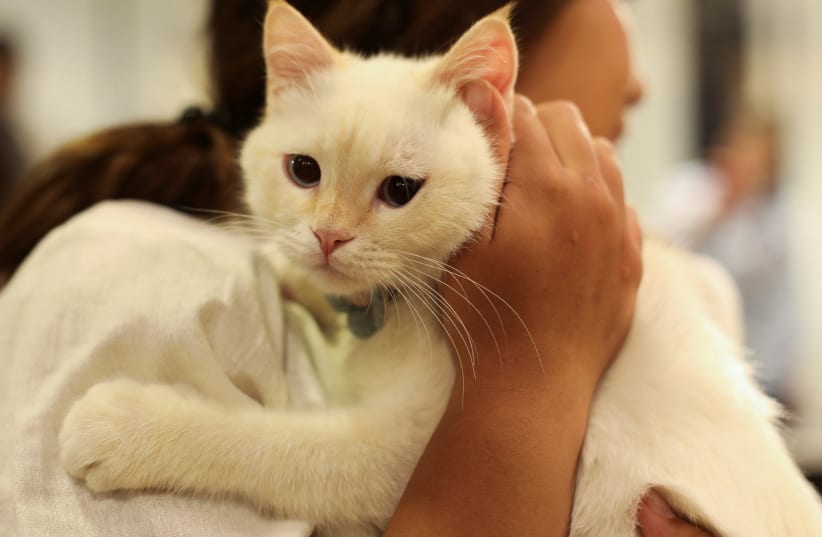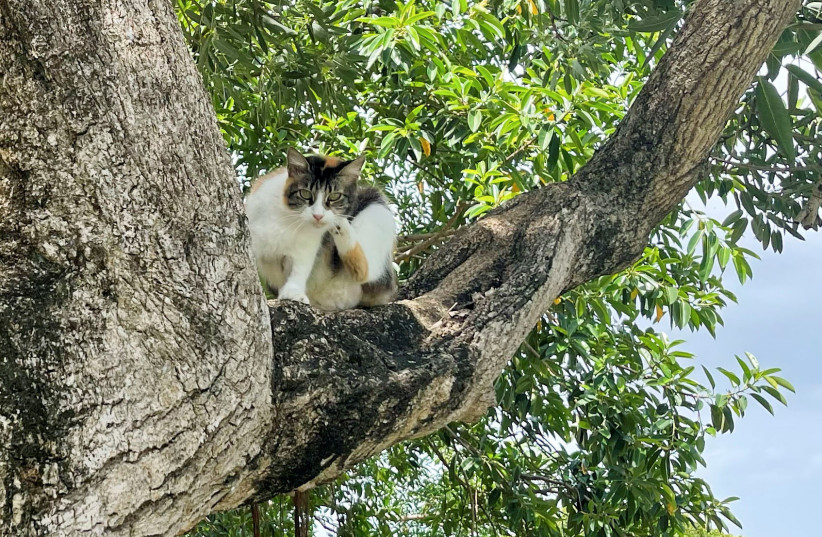Cats, like dogs, communicate with other felines through their scents. One of the cats’ scent-marking behaviors is spraying urine on vertical surfaces such as walls, sidewalks, and furniture.
Female dogs urinate on the ground, while males raise a leg but don’t spray it. Although spraying plays an essential role in the feline world, it often poses challenges for its owners because of its strong and pungent odor.
Cat urine has a much stronger odor than that of dogs, whose powerful noses collect information from the aromas of other canines that had been outdoors like newspaper readers read the news.
Notably, sprayed cat urine has a more pungent odor on the human nose than normal urine in their litter boxes. While it is believed that sprayed urine contains additional chemicals possibly derived from anal sac secretions, scientific evidence supporting this remains unclear.
Researchers examine the reason for sprayed urine odor
Japanese researchers examined why the sprayed urine had a distinctive smell compared to their normal urine.They have just published their findings in the Journal of Chemical Ecology, titled “Sprayed urine emits a pungent odor due to its increased adhesion to vertical objects via urinary proteins rather than to changes in its volatile chemical profile in domestic cats.”
Chemical analyses revealed a high degree of similarity in these profiles within the same individuals. Behavioral analyses further demonstrated that cats perceived the sprayed urine and urine remaining in the bladder after spraying as similar odors, whereas the odors of another cat’s urine were perceived as different.
According to Prof. Masao Miyazaki, a leader of the research project at Iwate University, some 500 kilometers north of Tokyo, the data indicate that the sprayed urine originates from bladder urine without supplementation with chemicals from other secretory glands.
Given the high degree of similarity of volatile chemical profiles between sprayed cat urine and naturally normal urine, researchers examined why sprayed urine emits a pungent odor from another perspective.
They observed that urine samples easily adhered to the inner surface of plastic syringes when they transferred the samples into glass vials for urinary volatile analyses.“This observation prompted us to explore the underlying mechanisms, ” said Reiko Uenoyama, the paper’s first author. Two decades ago, Miyazaki discovered that healthy cats excrete a substantial amount of a urinary protein named cauxin (“curiosity” in Japanese), which contributes to the production of sulfur-containing odorants responsible for the distinct catty smell.
“Generally, the wettability of a liquid on a solid surface increases as the surface tension decreases. Based on this knowledge, we hypothesized that the high protein concentration in cat urine might reduce the surface tension of cat urine, enhancing the emission of urinary volatile compounds from the large vertical surface area that was spread over the urine,” she said.
As anticipated, the surface tension was reduced with increasing concentrations of cauxin. At the same protein concentration, the wettability was higher in the cauxin solution than in the control solution containing albumin, a major protein contained in mammalian blood.
When comparing the surface tension of cat urine with and without proteins, they confirmed that urine with proteins exhibited significantly lower surface tension than deproteinized urine.
Interestingly, the urine with proteins also demonstrated greater adhesion to vertically positioned glass plates than the deproteinized urine.
In their observations, odorants responsible for the distinctive catty smell were detectable in an artificial miniature garden designed to mimic natural environments in which a block sprayed with tomcat urine was placed.
In contrast, no such odorant was below the detection limit in another garden where the same urine was poured directly into the sandy soil and then covered.
“The difference in environmental odors between the two gardens, despite using the same urine sample, can be explained by most of the urinary volatile chemicals being trapped in the porous structure of the sandy soil. This phenomenon did not occur in the urine adhering to the surface of the block. Additionally, liquid droplets of sprayed urine can easily dry on the surface of the block, resulting in rapidly greater emissions of volatile chemicals from the scent mark than from normal urine,” Miyazaki explained.
In conclusion, the authors wrote that feline sprayed urine originates solely from the bladder, without any contribution from other secretions. Despite this exclusive source, sprayed urine emits a strong and pungent odor owing to enhanced adhesion on vertical surfaces.
Cauxin plays a crucial role in scent marking by not only producing cat-specific odorants but also by enhancing the emission of urinary volatile chemicals by increasing the wettability of the sprayed urine. “These findings improve our understanding of the mechanism of scent marking via the spraying of urine for chemical communication in cats.”

